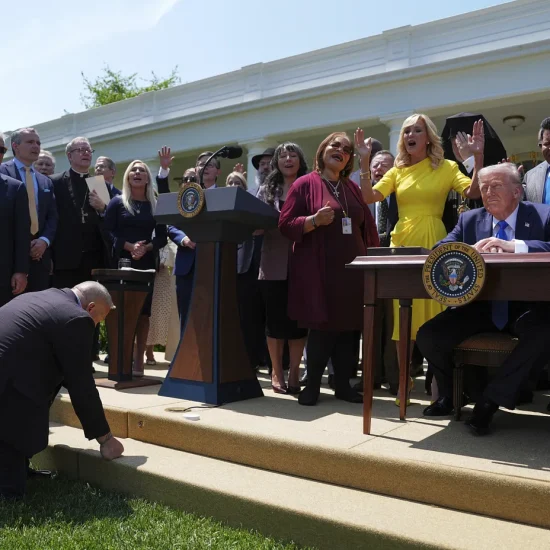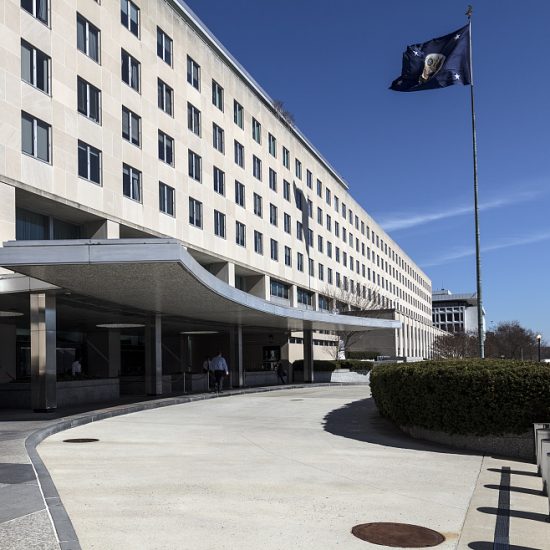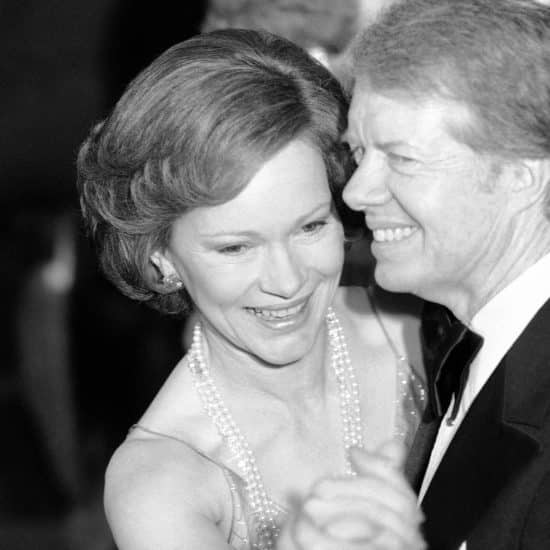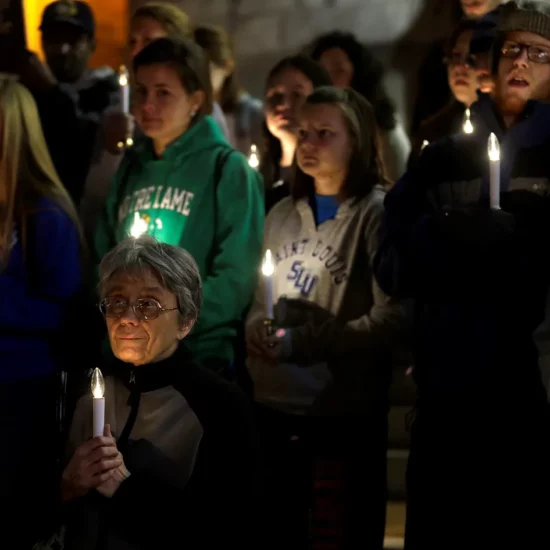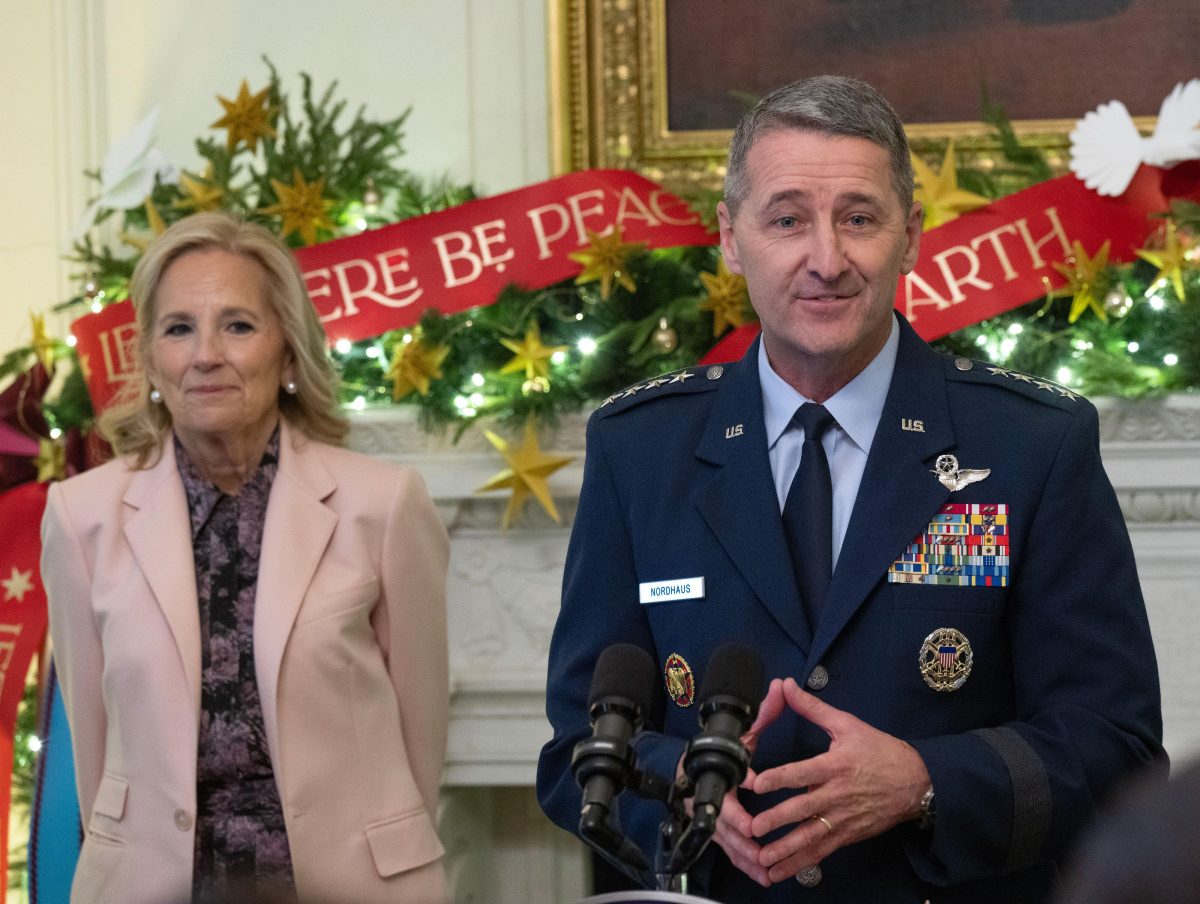
Last week, First Lady Jill Biden unveiled this year’s Christmas decorations at the White House. As usual, it’s a big show. More than 300 volunteers spent a week putting up 83 Christmas trees, more than 9,800 feet of ribbon, more than 28,000 ornaments, and more than 165,000 lights. But it all didn’t quite add up right.
The chosen theme was “Season of Peace and Light.” So there the first lady stood along with a uniformed general in front of a banner declaring, “Let There Be Peace On Earth.” Irony is dead. And so, apparently, is our vision of “peace on Earth” as proclaimed to the shepherds two millennia ago.
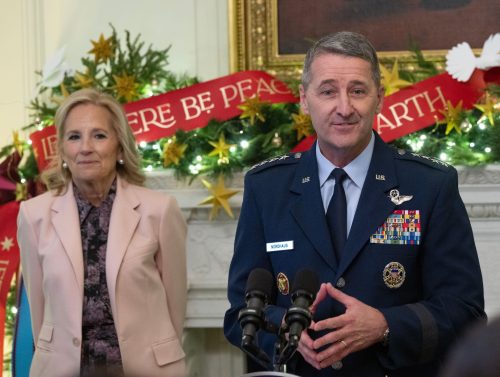
First Lady Jill Biden and General Steven Nordhaus, chief of the National Guard Bureau, speak in front of a “Let There Be Peace On Earth” banner during the public unveiling of the White House Christmas decorations on Dec. 2, 2024. (Media Punch/Alamy)
“Peace on Earth,” the White House declares, after increasing military spending to record levels of nearly $900 billion annually.
“Peace on Earth,” the White House declares, while sending more weapons to Israel to bomb Palestinians — including the small Christian community there huddling together as they mark another Christmas amid the rubble.
“Peace on Earth,” the White House declares, while sending landmines and cluster bombs to Ukraine where these internationally-banned weapons will kill civilians for decades to come.
“Peace on Earth,” the White House declares, while defending the president’s international record that includes dropping bombs in Afghanistan, Iraq, Somalia, Syria, and Yemen.
“Peace on Earth,” the White House declares, while the lame-duck president pardons his son but so far has failed to fulfill a campaign promise to end the federal death penalty.
“Peace on Earth,” the White House declares, with a uniformed military general on hand to issue the declaration.
The decorating elves put up over 2,200 doves throughout the White House. That’s one for every 20 people killed in Gaza over the last 14 months. Yet, even with a massive flock of these symbols of peace throughout the White House, the Biden administration thinks it has the moral credibility to announce a “season of peace and light.”
Although the White House is invoking “peace on Earth” as a celebration of Christmas, it feels less like what the heavenly hosts proclaimed and more like the imperial Pax Romana (“Roman peace”). This idea of a “golden age” of the Roman empire is generally dated as starting with Caesar Augustus. But the “peace” he brought came from military conquests, oppression of subjugated people, and crucifixion of rebels. That wasn’t “peace,” no matter how many ornaments or sparkling lights Augustus forced people to hang around his throne.
The peace that Jesus brought is not that what the Caesars offered. As the Gospel of Luke reminds us, “in those days” of Caesar Augustus, a heavenly host appeared before lowly shepherds to declare the arrival of the real Prince of Peace. So if we learn anything from the biblical texts, we should expect God’s messengers won’t be found in the decorated royal palace in Washington, D.C., but in the rumble of imperial violence like that in Gaza, Syria, Ukraine, or Somalia.
Brian Kaylor is president & editor-in-chief of Word&Way and co-author of Baptizing America: How Mainline Protestants Helped Build Christian Nationalism.

